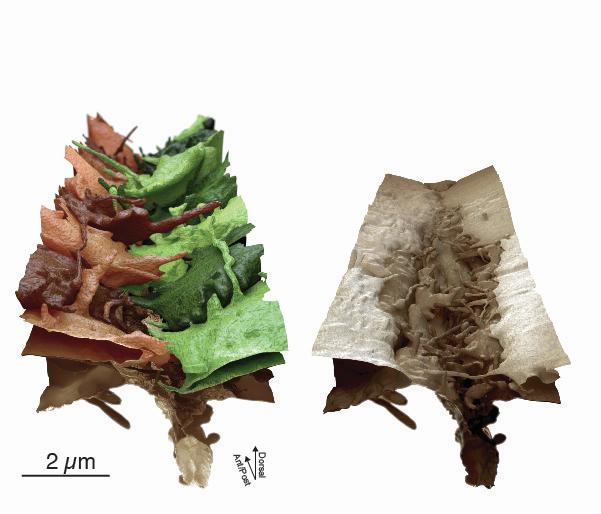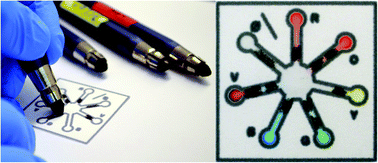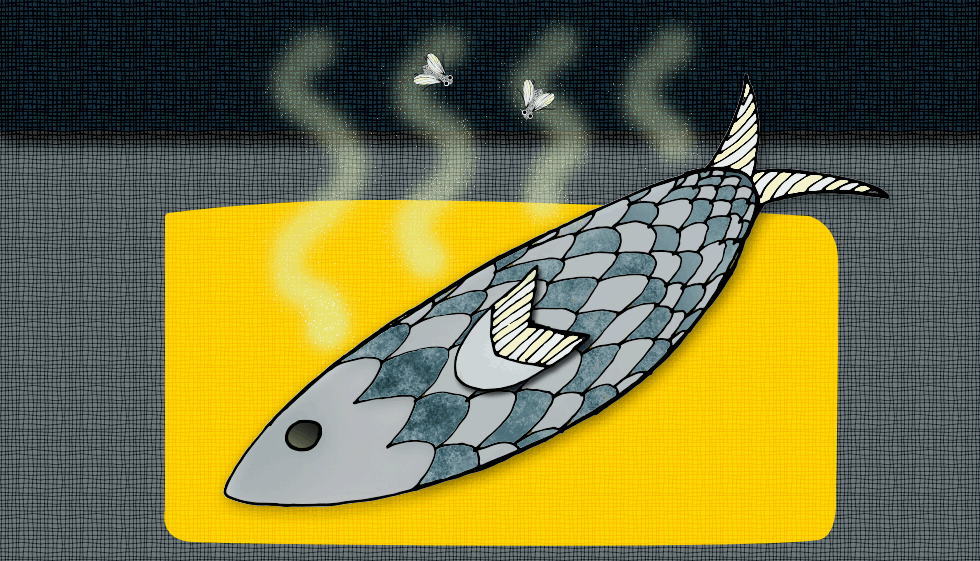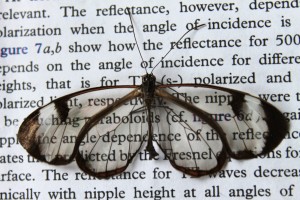Our paper (Raewyn Turner, an artist from New Zealand, and mine, Maryse de la Giroday), Steep (I): a digital poetry of gold nanoparticles, has been accepted for the 2015 International Symposium on Electronic Arts (ISEA) to be held in Vancouver, Canada from Aug. 14 – 18, 2015. I last wrote about ISEA 2015 in a Dec. 19, 2014 post where I indicated more information about our project would be forthcoming—the next week. Ah well, better late than never, eh?
Before getting to our project, here’s a little information on the symposium’s theme (from the Theme page),
ISEA2015’s theme of DISRUPTION invites a conversation about the aesthetics of change, renewal, and game-changing paradigms. We look to raw bursts of energy, reconciliation, error, and the destructive and creative forces of the new. Disruption contains both blue sky and black smoke. When we speak of radical emergence we must also address things left behind. Disruption is both incremental and monumental.
In practices ranging from hacking and detournement to inversions of place, time, and intention, creative work across disciplines constantly finds ways to rethink or reconsider form, function, context, body, network, and culture. Artists push, shape, break; designers reinvent and overturn; scientists challenge, disprove and re-state; technologists hack and subvert to rebuild.
Disruption and rupture are fundamental to digital aesthetics. Instantiations of the digital realm continue to proliferate in contemporary culture, allowing us to observe ever-broader consequences of these effects and the aesthetic, functional, social and political possibilities that arise from them.
Within this theme, we want to investigate trends in digital and internet aesthetics and revive exchange across disciplines. We hope to broaden the spheres in which disruptive aesthetics can be explored, crossing into the worlds of science, technology, design, visual art, contemporary and media art, innovation, performance, and sound.
At least two of the speakers are going to be very well aligned with the disruption theme (from the Keynote Speakers page),
Session Title: Tactical and Creative Resistance
The Yes Men, Andy Bichlbaum and Mike Bonanno, have been called “the Jonathan Swift of the Jackass generation” by author Naomi Klein. The Yes Men have impersonated World Trade Organization, Dow Chemical Corporation, and Bush administration spokesmen on TV and at business conferences around the world. They do this (a) in order to demonstrate some of the mechanisms that keep bad people and ideas in power, and (b) because it’s absurdly fun. As the Yes Men, they use humor, truth and lunacy to bring media attention to the crimes of their unwilling employers. Their second film, The Yes Men Fix the World, won the audience award at this year’s Berlin Film Festival, the Grierson Award for Most Entertaining Documentary, and went on to become a smash box-office sensation, only just barely surpassed by Avatar. Their main goal is to focus attention on the dangers of economic policies that place the rights of capital before the needs of people and the environment.
 Michael Connor
Michael Connor
Sessions Title: TBD
Michael Connor is the Editor and Curator of Rhizome at the New Museum. Connor’s work focuses on artists’ responses to cinema and new technologies. His past solo and collaborative projects as curator include: ‘Liquid Crystal Palace,’ Honor Fraser, Los Angeles; ‘Street Digital’ (works by artist duo JODI); ‘Wild Sky,’ Edith-Russ Haus, Oldenburg, Germany; ‘Screen Worlds’, ACMI in Melbourne; ‘Essential Cinema’ at the Toronto Film Festival, and ‘The New Normal’ touring exhibition. Connor previously worked as Curator at FACT, Liverpool and Head of Exhibitions at BFI Southbank, London.
Brian Massumi
Session Title: No One Without Another: Creativity and Decision in the Transindividual Fold
Brian Massumi is professor of communication at the University of Montreal. He specializes in the philosophy of experience, art and media theory, and political philosophy. His most recent books include Politics of Affect (Polity, 2015), The Power at the End of the Economy (Duke UP, 2015), and What Animals Teach Us about Politics (Duke UP, 2014). He is co-author with Erin Manning of Thought in the Act: Passages in the Ecology of Experience (co-written with Erin Manning; University of Minnesota Press, 2014). Also with Erin Manning and the SenseLab collective, he participates in the collective exploration of new ways of bringing philosophical and artistic practices into collaborative interaction, most recently in the frame of the “Immediations: Art, Media, Event” international partnership project.

Dominique Moulon
Sessions Title: TBD
Dominique Moulon studied visual art at the Fine Art School (ENSA) of Bourges and holds a Master’s Degree in aesthetics, science and technology from the University of Paris 8. Member of the Observatory of Digital Worlds in Humanities (OMNSH), of the International Association of Art Critics (AICA), of the Opline Prize for online contemporary art and founder of MediaArtDesign.net ; he also writes articles for Art Press, Digital MCD, The Seen and Neural. He is the Artistic Director of the media art fair Variation Paris and currently curator in residence at the art center of the Maison Populaire in Montreuil. Dominique Moulon teaches new media at Parsons (The New School for Design), ECV (Ecole de Communication Visuelle) and EPSAA (Ecole Professionnelle Supérieure d’Arts Graphiques) in Paris. He has also been a regular guest professor at the School of the Art Institute of Chicago (SAIC), the National School of Fine Arts (ENSBA) in Paris, The Fresnoy (Studio national des arts contemporains) and the University of Paris 8. His book Contemporary New Media Art was published in French by Nouvelles Editions Scala in 2011 and in English as an e-book in 2013. He is doing research at the laboratory Art & Flux (CNRS) of the University of Paris 1 Panthéon-Sorbonne while preparing his next book on the relationships between art, technology and society. As an expert in digital cultures, he has also been sollicited for his input by some companies like Axa, Accenture, Google, Landor or Renault.
Hildegard Westerkamp

Sessions Title: TBD
Hildegard Westerkamp has lectured on topics of listening, environmental sound and acoustic ecology and has conducted soundscape workshops internationally. By focusing the ears’ attention to details in the acoustic environment, her compositional work draws attention to the act of listening itself and to the inner, hidden spaces of the environment we inhabit. For details check her website: http://www.sfu.ca/~westerka
Her music has been commissioned by CBC Radio, Canada Pavilion at Expo ’86, Ars Electronica (Linz), Österreichischer Rundfunk, Zentrum für Kunst und Medien in Germany…. She received Honorable Mentions in competitions such as Prix Ars Electronica in Austria, Prix Italia, and the International Competition for Electroacoustic Music in Bourges, as well as a Recommendation for Broadcast from the International Music Council’s 4th International Rostrum of Electroacoustic Music. Her articles have been published in Radio Rethink, Kunstforum, Musicworks, MusikTexte and a variety of books… For an extensive exploration into her compositional work see Andra McCartney’s Sounding Places: Situated Conversations through the Soundscape Work of Hildegard Westerkamp, York University, Toronto, 1999, and in the internet at: http://beatrouteproductions.com/Andradiss.pdf
As part of Vancouver New Music’s yearly season she has coordinated and led Soundwalks for some years since 2003, which in turn inspired the creation of The Vancouver Soundwalk Collective.
A founding member of the World Forum for Acoustic Ecology (WFAE, see: www.wfae.net), and long-time co-editor of its journal Soundscape, Westerkamp was a researcher for R. Murray Schafer’s World Soundscape Project in the Seventies, and has taught acoustic communication at Simon Fraser University with colleague Barry Truax.
Sara Diamond
Biography coming soon
As for the last speaker on the list, Sara Diamond is the president of the Ontario College of Art and Design University (OCAD University). Her professional focus is digital media and prior to heading OCAD University she was the Artistic Director of Media and Visual Art and Director of Research at the Banff Centre. You can find out more about Sara Diamond here.
Back to Steep, this is a project concerning gold nanoparticles. Here’s what Raewyn wrote about it on the homepage of the Steep website,
The general atmosphere is saturated and awash with particles and vibrations that are transpired by living beings and everything on earth. Emerging into the troposphere, sounds and fragrances arise from cultural, social and political systems that have engineered the landscapes and thus mindscapes into settlements, habitations, fields, factories, front lawns and streets.
In the absence of a visceral sensing of the atmospheric ocean of particles and cues which are in dynamic flux with perception., Steep combines art+ science+ technology to explore sensing gold nanotechnology, where it accumulates, changes over time, and how it may affect living beings and the environment
Raewyn, a visual artist (video, painting, sculpture, interactive installations) and concept and design theatre artist and lighting designer located in Auckland, New Zealand, contacted me, located in Vancouver, Canada, a few years ago after reading some of the material I have on gold nanoparticles. She wanted to make contact with a scientist who was examining gold nanoparticles as they circulate from products into the air, the water, and the soil. Eventually I remembered the Duke University mesocosm project, located in Durham, North Carolina, at the Center for the Environmental Implication of Nano Technology (CEINT) led by Mark Wiesner (first mentioned here in an Aug. 15, 2011 post) and so Raewyn found her scientist and, although she wasn’t looking for one, a writer too. Her longtime collaborator, Brian Harris (located in Auckland, New Zealand), has an electronics background and is an independent designer and inventor who “invents and creates large scale finely tuned adaptive mechatronics and bespoke equipment. His inventions for motion control, stabilising camera mounts for aerial photography and robotic trajectories have been used in local and international tv, commercial and film productions.” (from the Steep About Us page).
For our first Steep project, Raewyn and I are working on a digital poetry installation. Here’s more about the project from the paper,
Steep is an international art/science research project examining the impact gold and gold nanoparticles have had in the past and could have in the future. Designed as a multi-year, multidisciplinary project with a rotating cast of collaborators, Steep is based on the current state of scientific research and its flexibility as a project reflects the uncertain and disruptive state of nanoscience and nanotechnology (as they are sometimes referred to).
Steep (I) a digital poetry of gold nanoparticles, our first piece, is largely concerned with the elements of air and earth or more fancifully, gold in all its forms: myth, metaphor, and reality as it transitions visibly and invisibly throughout our environment.
The following poetry excerpt and video sample accompanying this submission [the video sample is not included in this posting] are works in progress and a research project within themselves.
Yearning
(excerpt)
shards of sun
hidden in the river’s silted bed
buried beneath the earth’s skin
a beautiful killing
in the cold, cold river
in the darkness underground
opportunities made of gold
wealth beyond Croesus’ and Midas’ imaginings
shining brighter than the sun
The other two parts of the trilogy are titled: Light/Shadow and Discovery respectively. I may have to change that last three lines to:
opportunities of gold
beyond Midas’ and Croesus’ imaginings
brighter than the sun
Raewyn and I are quite excited but there’s still work to do (our reviewers had comments).

 Yes Men
Yes Men




